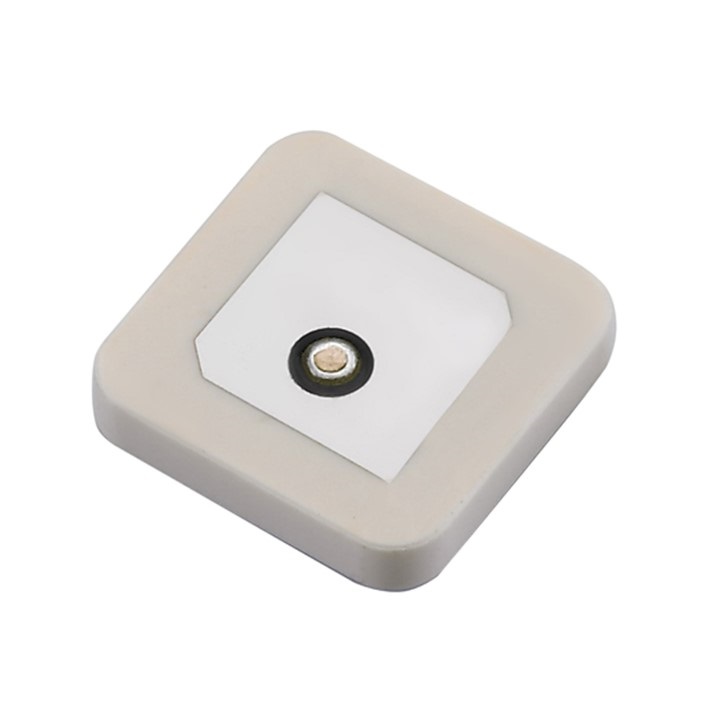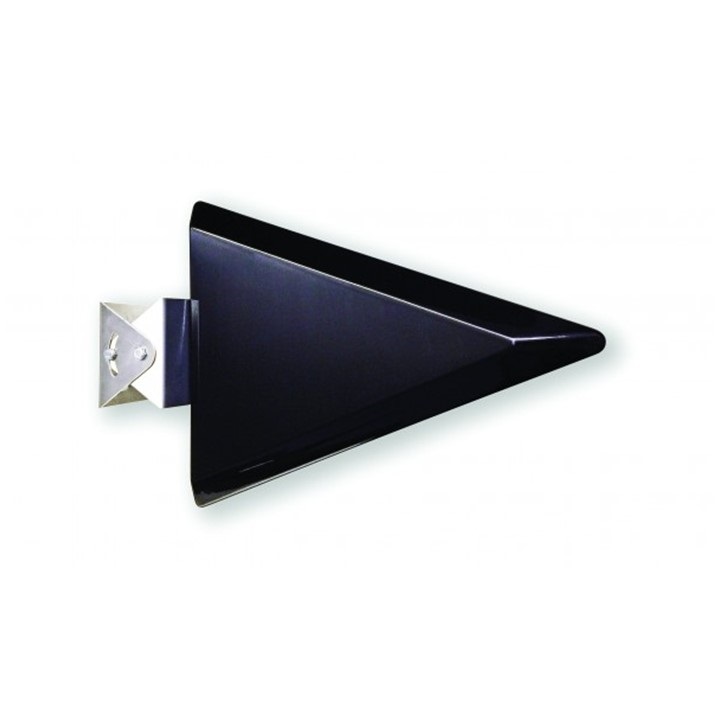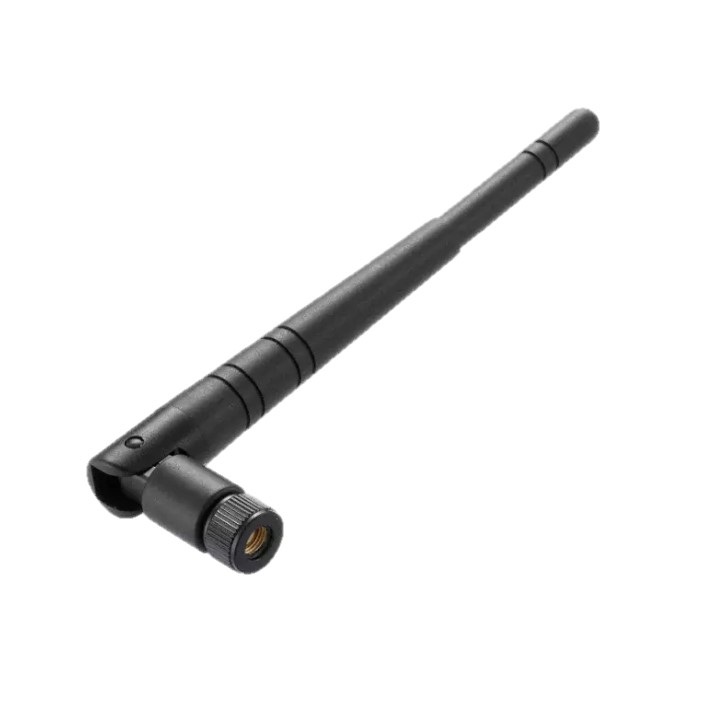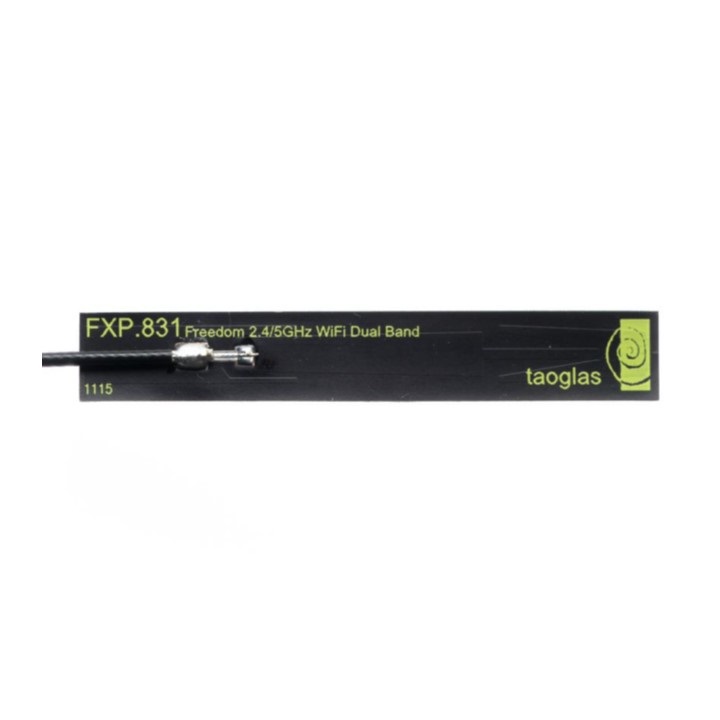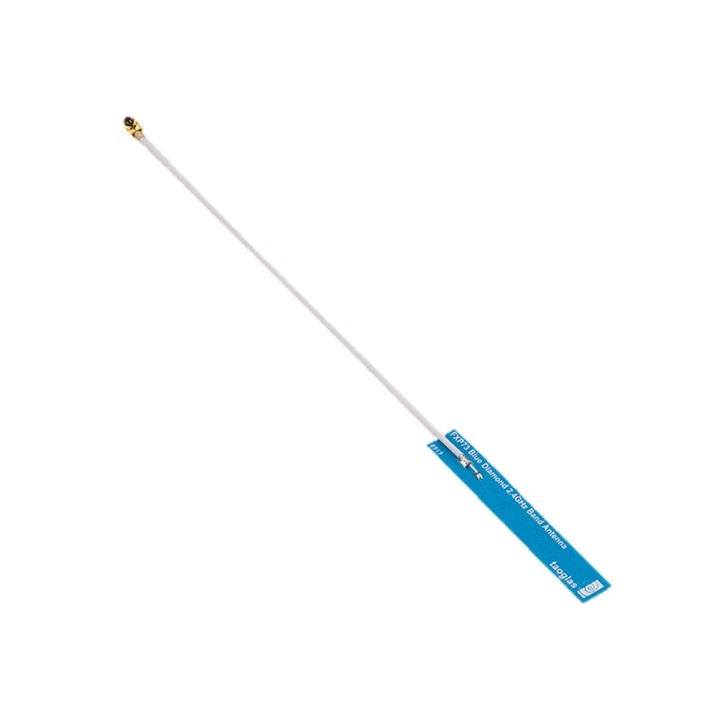Wi-Fi/Bluetooth/Zigbee
WLP
This WLP.25 patch antenna for ISM, Wi-Fi, Bluetooth and Zigbee is based on smart XtremeGain™ technology. It is mounted via pin and double-sided adhesive and has been selected as optimal solution for the 50*50mm ground plane. This passive patch offers typical gain response from 2.5 dBi and a higher gain can be achieved, depending on the Ground Plane, the space available and clearance afforded. The WLP.25’s high gain performance is a perfect solution for metering and remote monitoring applications; it can deliver longer range than smaller chip antennas.
Many module manufacturers specify peak gain limits for any antennas that are to be connected to that module. Those peak gain limits are based on free-space conditions. In practice, the peak gain of an antenna tested in free-space can degrade by at least 1 or 2dBi when put inside a device. So ideally you should go for a slightly higher peak gain antenna than mentioned on the module specification to compensate for this effect, giving you better performance.
Upon testing of any of our antennas with your device and a selection of appropriate layout, integration technique, or cable, Taoglas can make sure any of our antennas’ peak gain will be below the peak gain limits. Taoglas can then issue a specification and/or report for the selected antenna in your device that will clearly show it complying with the peak gain limits, so you can be assured you are meeting regulatory requirements for that module.
For example, a module manufacturer may state that the antenna must have less than 2dBi peak gain, but you don’t need to select an embedded antenna that has a peak gain of less than 2dBi in free-space. This will give you a less optimized solution. It is better to go for a slightly higher free-space peak gain of 3dBi or more if available. Once that antenna gets integrated into your device, performance will degrade below this 2dBi peak gain due to the effects of GND plane, surrounding components, and device housing. If you want to be absolutely sure, contact Taoglas and we will test. Choosing a Taoglas antenna with a higher peak gain than what is specified by the module manufacturer and enlisting our help will ensure you are getting the best performance possible without exceeding the peak gain limits.
Features:
- 5dBi Peak Gain
- Pin type
- Automotive TS16949 Production and Quality Approved
- 25 mm * 25 mm * 4,5 mm
- RoHS Compliant
Download documents: WLP.2450.24.4.A.02.pdf
LPDA
The LPDA.02.032111 Engager is a wide-band directional LPDA exterior antenna that operates within the 698-3900MHz frequency bands. It is an innovative and future proof solution, ideal for LTE 4G and 2G/3G networks as well as 2.4GHz Wi-Fi.
This wideband design eliminates the need to purchase different antennas for each frequency which simplifies installations since the same antenna can be used for a wide array of wireless applications where extensive coverage is desired.
The LPDA.02 has a 70° beam width in both orthogonal planes. The ABS external housing is robust, UV resistant and fully IP67 waterproof ensuring it is completely weatherproof and sealed. For various mounting options, it is supplied ith tilt and swivel wall and pole brackets. The LPDA.02 has been tested for wind resistance up 200 km/h LTE 4G and 2.4GHz Wi-Fi applications demand high speed data uplink and downlink and where required, two LPDA.02 antennas can be mounted in space at 90° to create a MIMO arrangement. Cable type, length and connectors are customizable for large order volumes. Please contact your regional Taoglas sales office for support.
Features:
- Frequency: 698-3900MHz
- Peak Gain: 7dBi
- Dims: 230*330*32mm
- Dims with Bracket: 230*420*105mm
- Cable Length: 300mm
- Connector: SMA(M)
- RoHS Compliant
Download documents: LPDA.02.0321111.pdf
GW71
Many module manufacturers specify peak gain limits for any antennas that are to be connected to that module. Those peak gain limits are based on free-space conditions. In practice, the peak gain of an antenna tested in free-space can degrade by at least 1 or 2dBi when put inside a device. So ideally you should go for a slightly higher peak gain antenna than mentioned on the module specification to compensate for this effect, giving you better performance.
Upon testing of any of our antennas with your device and a selection of appropriate layout, integration technique, or cable, Taoglas can make sure any of our antennas’ peak gain will be below the peak gain limits. Taoglas can then issue a specification and/or report for the selected antenna in your device that will clearly show it complying with the peak gain limits, so you can be assured you are meeting regulatory requirements for that module.
For example, a module manufacturer may state that the antenna must have less than 2dBi peak gain, but you don’t need to select an embedded antenna that has a peak gain of less than 2dBi in free-space. This will give you a less optimized solution. It is better to go for a slightly higher free-space peak gain of 3dBi or more if available. Once that antenna gets integrated into your device, performance will degrade below this 2dBi peak gain due to the effects of GND plane, surrounding components, and device housing. If you want to be absolutely sure, contact Taoglas and we will test. Choosing a Taoglas antenna with a higher peak gain than what is specified by the module manufacturer and enlisting our help will ensure you are getting the best performance possible without exceeding the peak gain limits.
Features:
- 5dBi High Performance Antenna
- RP-SMA(M) Hinged Antenna
- RoHS Compliant
Download documents: GW.71.5153.pdf
FXP831
The FXP831 is a high efficiency, small, dual-band, dipole antenna for 2.4/4.9-6GHz bands including WiFi, Bluetooth, Zigbee, DSRC, V2V, and other applications in these bands. The FXP.831 has a peak gain of 2.5dBi at 2.4GHz and efficiencies of 56%, and 4.5dBi and 55% along bands 4.9GHz to 6GHz.
This Taoglas patent pending antenna is unique in the market because it is made from poly-flexible material, has a tiny form factor (45*7*.01mm) and has double-sided 3M tape for easy “peel and stick” mounting. The cable routes conveniently directly out of the bottom of the antenna, reducing the volume the antenna takes up in the device to an absolute minimum compared to other designs. The FXP.831 is the ideal all-round antenna solution for squeezing into narrow spaces and still maintaining high performance, for example on the inside top or adjacent side applied directly to the plastic housing of LCD devices.
Many module manufacturers specify peak gain limits for any antennas that are to be connected to that module. Those peak gain limits are based on free-space conditions. In practice, the peak gain of an antenna tested in free-space can degrade by at least 1 or 2dBi when put inside a device. So ideally you should go for a slightly higher peak gain antenna than mentioned on the module specification to compensate for this effect, giving you better performance.
Upon testing of any of our antennas with your device and a selection of appropriate layout, integration technique, or cable, Taoglas can make sure any of our antennas’ peak gain will be below the peak gain limits. Taoglas can then issue a specification and/or report for the selected antenna in your device that will clearly show it complying with the peak gain limits, so you can be assured you are meeting regulatory requirements for that module. For example, a module manufacturer may state that the antenna must have less than 2dBi peak gain, but you don’t need to select an embedded antenna that has a peak gain of less than 2dBi in free-space.
This will give you a less optimized solution. It is better to go for a slightly higher free-space peak gain of 3dBi or more if available. Once that antenna gets integrated into your device, performance will degrade below this 2dBi peak gain due to the effects of GND plane, surrounding components, and device housing. If you want to be absolutely sure, contact Taoglas and we will test. Choosing a Taoglas antenna with a higher peak gain than what is specified by the module
manufacturer and enlisting our help will ensure you are getting the best performance possible without exceeding the peak gain limits.
Features:
- Flexible Ultra Low Profile 45mm*7mm*0.1mm
- Adheres directly to inside of product plastic or glass housing
- Form factor and cable routing convenient for integration
- High Efficiency
- MMCX(M)RA Connector
- 100m 1.37mm co-axial cable
- RoHS Compliant
Download documents: FXP831.09.0100C.pdf
FXP73
The FXP73 Blue Diamond 2.4GHz Antenna works on WiFi, ZigBee, Bluetooth and ISM band at 2.4 GHz. This antenna has been designed with a specific solution to cover the current market applications that require rectangular form-factor, with easy installation through a cable connection.
Many module manufacturers specify peak gain limits for any antennas that are to be connected to that module. Those peak gain limits are based on free-space conditions. In practice, the peak gain of an antenna tested in free-space can degrade by at least 1 or 2dBi when put inside a device. So ideally you should go for a slightly higher peak gain antenna than mentioned on the module specification to compensate for this effect, giving you better performance.
Upon testing of any of our antennas with your device and a selection of appropriate layout, integration technique, or cable, Taoglas can make sure any of our antennas’ peak gain will be below the peak gain limits. Taoglas can then issue a specification and/or report for the selected antenna in your device that will clearly show it complying with the peak gain limits, so you can be assured you are meeting regulatory requirements for that module.
For example, a module manufacturer may state that the antenna must have less than 2dBi peak gain, but you don’t need to select an embedded antenna that has a peak gain of less than 2dBi in free-space. This will give you a less optimized solution. It is better to go for a slightly higher free-space peak gain of 3dBi or more if available. Once that antenna gets integrated into your device, performance will degrade below this 2dBi peak gain due to the effects of GND plane, surrounding components, and device housing. If you want to be absolutely sure, contact Taoglas and we will test. Choosing a Taoglas antenna with a higher peak gain than what is specified by the module manufacturer and enlisting our help will ensure you are getting the best performance possible without exceeding the peak gain limits.
Features:
- 2.5dBi Gain
- MMCX(M)RA Connector
- 10 mm Cable
- 47*7*0.1 mm
- RoHS Compliant
Download documents: FXP73.09.0100A.pdf

